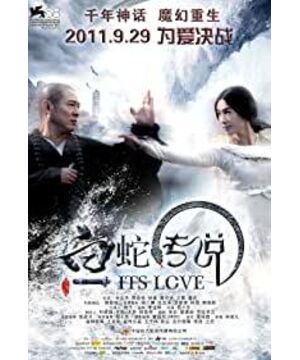It is an increasingly prominent trend in today's film creation to mine materials from myths, legends and literary works as the mother of films. From "The Golden Armor in the City" (adapted from "Thunderstorm") to "Painted Skin" (adapted from "Strange Tales from a Liaozhai"), from "Love in the Hawthorn Tree" (adapted from the novel of the same name) to "Favorite" (adapted from "Ding") Zhuang Meng”), the creation of contemporary Chinese films seems to have tried their best to penetrate the roots into the soil of literature in order to obtain nourishment. However, the current Chinese film creation seems to be caught in a dilemma: the constant adaptation of new bottles of old wine makes the audience who are already aesthetically fatigued continue to criticize the production level of the film; on the other hand, some highly original films are due to investment , market, publicity and many other factors, and the box office is bleak, even if there are innovations and breakthroughs in art, and won a good reputation, it is difficult to occupy a favorable position in the increasingly fierce business competition. Corresponding to this dilemma, the tendency of technocratic thinking under the influence of the concept of "big investment and big return" is revealed - the excessive pursuit of the technical performance and visual impact of the film, while ignoring the creation of the content of the film itself. The success of "Avatar" has brought about a new revolution in film technology. The high box office returns have made more and more film directors ignore the expressiveness of the script itself and focus on special effects in the process of film creation. Technologicalism is to a certain extent Re-flood. This tendency reflected in films such as "Butterfly on the Shoulder" and "Painted Wall" is particularly evident in "The Legend of the White Snake". However, what technology cannot hide is the mediocrity and pallor of the film itself, and this trend reflects the impetuous environment of current film creation.
Plot adaptation: banal and absurd
As one of the four major Chinese folklore (the other three are "The Liang Zhu", "Meng Jiang Nu", "The Cowherd and the Weaver Girl"), the story of "The White Snake" is widely circulated. Although the versions are different, the core plot is still coherent and inherently consistent. Sex, both fully express the love story of Xu and Bai, and at the same time make some classic bridges such as Water Man Jinshan and Broken Bridge deeply rooted in the hearts of the people. To adapt such a story, to a large extent, the director needs to innovate in thinking on the basis of respecting the audience's aesthetic needs, and endow the work with new meaning and connotation, but innovation does not mean unprincipled fabrication. The adaptation of "Legend of the White Snake" makes the audience not see the logic of the film's plot at all, but instead is full of a large number of absurd, mediocre, and superficial lines, as well as arrogant bridges and poor special effects. We know that the acquaintance of Xu and Bai is not a chance encounter on the wind and moon field, but a deep love from the heart and a bond that crosses ethical barriers. Therefore, the acquaintance of Xu and Bai arranged by the screenwriter here is inexplicable: Bai Suzhen glanced at She fell in love with Xu Xian who fell into the water and did not hesitate to use her true spirit to save her. Xu Xian instantly fell in love with Bai Suzhen's kiss in the water. This undoubtedly dispels the serious meaning of Xu and Bai's love to a large extent, and at the same time fails to provide a reasonable logical basis for the unfolding of the following plots-if their love is just a flame wiped out after the chance encounter, then how do we understand it? The power behind their love tragedy? How can unfounded love be exchanged for willing giving and sticking?
Perhaps because of the deliberate pursuit of innovation, the playwright transplanted the plot of stealing immortal grass to Xu Xian here, trying to show the respective contributions of both parties in this love, but the playwright ignored a particularly important issue here, that is, to Xu Xian image formation. Whether in classical legends or in previous literary and artistic works, the image of Xu Xian appears as a contradiction: on the one hand, he loves his wife deeply and is willing to stay with her; on the other hand, he He also has the cowardice of ancient Chinese traditional intellectuals in his bones. He listens to Fahai's slander and becomes an accomplice to destroy his own happiness. The image of Xu Xian in Tsui Hark's "Green Snake" deeply and meticulously depicts this contradiction. It is precisely because of Xu Xian's own cowardice that he made a big mistake, which further reflects the great shocking power of his views on love when he repented. . However, this change by the playwright in "Legend of the White Snake" made Xu Xian stand on the same level as Bai Suzhen, and even made each character appear as a "perfect person", ignoring the character image that the film itself should have. of expressiveness. If "Green Snake" tries to convey the idea that "all gods are humans", then what is explained in "Legend of the White Snake" is the vulgar view that "all humans are gods". The white snake in the film is willing to pay for Xu Xian. Xu Xian stole the fairy grass for the sake of the white snake. He can bear to turn against Fahai to save the green snake. Even the little animals are all helpful characters. If there are so many loving people in the film, then the root of Xu and Bai's love tragedy can only be attributed to the huge difference in their respective identities. At this point, we can't help but ask, if the "innovation" of the play is still only to express a trite theme, then what is the value of this so-called "innovation"?
As far as the overall play structure is concerned, the whole film seems too fragmented due to too many branches serving technical gimmicks (including characters and plots, such as being able to endure being bitten by a bat demon). The lines do not serve to promote the plot, but are interspersed in the actors' performances mechanically and scatteredly, completely limiting the actors' performance space. Such a pale and mediocre plot design can almost be said to be the root cause of the film's failure.
Actors' performances: lackluster performances
of the leading actors in the film are lackluster. Their hoarse shouts or tears entanglement make us not see any trace of artistic creation, but it is easier for us to turn our attention to the supporting actors.
Starting from "Ocean Paradise", Jet Li began his own efforts to expand his play, hoping to appear in a new screen image. "Legend of the White Snake" seems to have brought Jet Li back to the old path of the king of kung fu. What's different from the past is that in "Legend of the White Snake", Jet Li's kung fu was overwhelmed by special effects skills, and even Huang Shengyi, who was weak, was able to resist or even gain the upper hand in front of a kung fu superstar. This can't help but remind us of Wang Jing's mockery of the technicalism of the film by using the image played by Jacky Cheung. Fa Hai, played by Jet Li, does not have the contradictions and introspection of Zhao Wenzhuo. Instead, it shows us a very moderate character in a cold way. In the article that has cooperated with Jet Li in "Ocean Paradise", Neng Ren is a character who can be fully explored, but because the script itself does not have enough material to support the character image, the actor's creation of the role is naturally also very important. Difficult to have room to play.
Due to the mediocrity and paleness of the script, "Legend of the White Snake" compresses the space in which the characters can be expressed to the extreme. Each character is extremely conceptual. The audience's judgment of the characters basically depends on the inherent experience, not the performance of the actors. . The dazzling technology has largely masked the actors' performances, preventing us from seeing the reality of the performances.
Luandan and others:
It should be pointed out that "Legend of the White Snake" can be said to be a typical example, a typical example of the combination of technology and business, and a typical example of the pale script and the impetuous film industry. When talking about the production concept, the investors of the film once said that the film was made to "promote" our traditional culture. After watching this film, one of the most profound feelings of everyone is: those investors who keep shouting about making films for culture I just don't know what culture is. All the speculation of new bottles and old wines and blunt "fried rice" can only make everyone lose more and more confidence in domestic films. What is hidden under the prosperity of technologism is the drive of interests and the neglect of the film itself.
"Legend of the White Snake" is like a snake. It was poisoned by its own brew and swallowed the bitter fruit that it thought was sweet.
View more about The Sorcerer and the White Snake reviews











